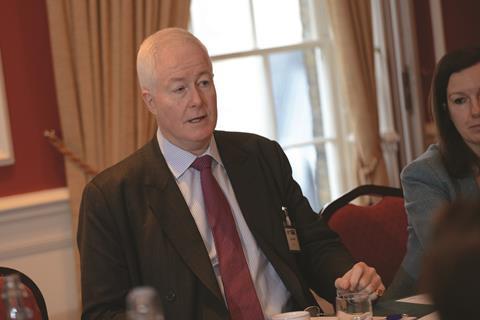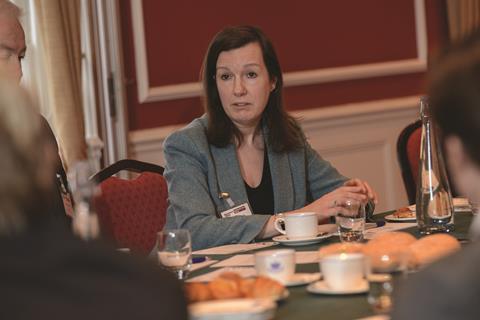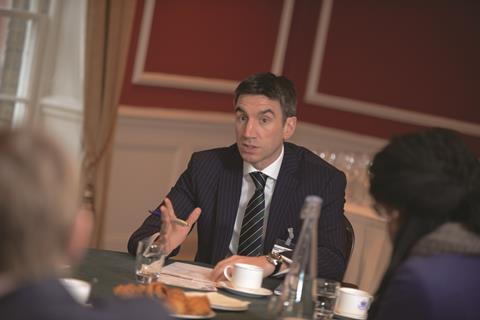A pressing issue facing underwriters is recruiting and retaining talent. An Insurance Times breakfast roundtable last month, held in association with Guidewire, brought together senior underwriters from the UK GI industry to discuss these challenges
It is a typical challenge faced by many underwriters new to the industry. The computer says one thing, but their gut instinct is telling them something different.
The problem is that so many underwriters today do not have the training and experience to question the computer. So it was encouraging to hear that some insurers are really taking training seriously, whether through a formal programme or mentoring.
The fact of underwriting life is that computers are here to stay. Powerful technology and analytics can harness the data to improve underwriting accuracy and prevent fraud.
The key point is that companies should have appropriate training to ensure underwriters have the capability to question decisions, and not just presume the computer is automatically right. It’s a brave new world out there, but for those that embrace it correctly, it is full of opportunities.
The Agenda

HOW BIG IS THE SKILLS GAP IN UNDERWRITING AND HOW DO WE FILL THE GAP LEFT WHEN SEASONED UNDERWRITERS RETIRE?
A Chartered Insurance Institute survey last year revealed that underwriting skills shortages in general insurance (GI) businesses have fallen to 52%, an improvement of 22%.
Of 2,300 businesses polled, 54% said they would need to spend more on recruitment and training in the year ahead.
Delegates at the roundtable echoed these sentiments but said that the trend towards decentralisation and budget restraints forced many to rethink their training strategy.
Hiscox Insurance managing director of underwriting Ross Dingwall said: “We try to make sure we can give the broadest training possible so [underwriters] can make the best decision about where they want to specialise. We also do on-the-job training.”
Zurich employees are encouraged to move between claims and underwriting roles. Head of casualty underwriting Steve Taylor said: “Claims is the product of underwriting. Zurich decided it needed cross-fertilisation.”
WE SAY…
More investment in formal and informal training is needed to ensure underwriters have the expertise to fi ll the skills gap.

IS TRAINING GOOD ENOUGH TO FILL THE SKILLS GAP?
Delegates agreed that training alone is not enough to fi ll the skills gap and that the development of underwriters should include cross-skilling and mentoring.
Conveyancing Risk Solutions senior underwriter Clair Rickaby said: “Culture is very important - it is not just about the money. We like to make sure people know they are an investment and important to us and we think that is likely to make them feel they are part of the company rather than part of the churn.”
Zurich head of casualty underwriting Steve Taylor agreed. He said: “Companies need to put development plans around people so that it enables them to detect the gap in their knowledge.”
Learning from other departments was also highlighted as a way to bridge skills gaps. Hiscox managing director of underwriting Ross Dingwall said the insurer co-locates its claims and underwriting teams, which “makes it easier to fi ll that skills gap, because they can learn from and talk to each other”.
WE SAY…
It is beneficial to bridge the gap between claims and underwriting by cross-training staff and co-locating teams. Mentoring is another route to developing talent.

HOW CAN TECHNOLOGY HELP FILL THE SKILLS GAP?
The underwriters agreed that technology has had huge benefi ts for the industry, allowing them to price risks far more accurately.
But they pointed out that underwriting was a balance of art and science and relying on technology alone could be dangerous.
Zurich head of casualty underwriting Steve Taylor said: “Technology is not enough; you can have someone with technical and numeracy skills but if you cannot articulate the information it is a problem.”
Hiscox managing director of underwriting Ross Dingwall also said many trainee underwriters struggled to understand basic principles, such as how combined operating ratios and rates
are arrived at, because of an over-reliance on technology to provide answers.
QBE property manager Adrian Ballardie said: “Like a mechanic you have to know what makes a car go as well as knowing how to drive it. Even when using technology, there is a danger of over or
underpricing if they have not done a sense check.”
WE SAY…
Technology has made great strides in the industry but there has been an over-reliance on it in some instances.

SHOULD INSURERS ACQUIRE STAFF FROM OTHER FIRMS TO ENSURE THE SKILLS GAP IS FILLED?
Poaching staff from rivals is commonplace in business. But delegates at the roundtable said that the issue was particularly prevalent in insurance, with staff switching between firms as companies try to attract highly skilled staff.
“Intellectual property forms a good part of the acquisition deal,” Zurich head of casualty underwriting Steve Taylor said.
Now4Cover chief executive Michael Muzio agreed. He said: “The difference between a good and bad underwriter can make such a difference to a business. If you write the right kind of business your profits sorts itself out right away.”
But too much switching between fi rms is also adding to the skills gap problem, delegates said. Taylor said that insurers needed to be “cleverer about building their own pool of talent”.
WE SAY…
Companies are missing out on developing the talent within their company and should also look to grab the experienced veterans who have felt outplaced in their previous company.
Hosted by comedian and actor Tom Allen, 34 Gold, 23 Silver and 22 Bronze awards were handed out across an amazing 34 categories recognising brilliance and innovation right across the breadth of UK general insurance.
























































No comments yet